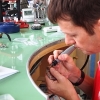-
Topics
-
Posts
-
So being a ladies were you luck with an SR621 or unlucky with an SR5XX?
-
By Neverenoughwatches · Posted
I hope it's not alkaline....🤔...mother in-law...🤔.....yes alkaline will be just fine. -
By Neverenoughwatches · Posted
Haha yep. I like it, it just rolls of the tongue 😅 -
I only want to replace the crown!!! May have to take it to a watchmaker.







Recommended Posts
Join the conversation
You can post now and register later. If you have an account, sign in now to post with your account.
Note: Your post will require moderator approval before it will be visible.